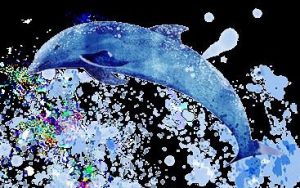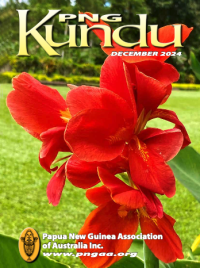Of Dolphins and Men (and women and children)
Chips Mackellar
Ever seen that 1957 movie, Boy on a Dolphin, with Sophia Loren and Alan Ladd?
The title song sung by Julie London stated:
There’s a tale that they tell of a dolphin
And a boy made of gold.
With the shells and the pearls of the deep,
He has lain many years fast asleep,
What they tell of the boy and the dolphin
Who can say if it’s true?
Should he rise from the depths of the ocean,
Any wish which you wish may come true.
 The movie tells the story of an archaeological search for the legendary golden statue of a boy riding a dolphin which, in its way, enlivens the ancient Greek myth that there is a natural affiliation between wild dolphins and humans.
The movie tells the story of an archaeological search for the legendary golden statue of a boy riding a dolphin which, in its way, enlivens the ancient Greek myth that there is a natural affiliation between wild dolphins and humans.
Visitors to Sea World will marvel at the amazing performance of trained dolphins as they jump through hoops, play water polo together, come when called, and squeak or click in conversation with their handlers. These dolphins are tame and trained. But according to Greek legend, wild dolphins can have an affinity with humans and respond in situations where humans are involved. Consider for example the wild dolphins at Monkey Mia in Western Australia, who frequently approach swimmers there to socialise and to be hand-fed.
But does such a friendly association with wild dolphins exist in PNG? I know of two occasions when it did, and you will not believe either of them.
When I was a kiap stationed at Bogia in the Madang District, we had frequent contact with the people of Manam Island, mainly because of its active volcano which sometimes caused us to assist with evacuations to the mainland or elsewhere on the island.
The Manam Island people were excellent fishermen, and whole families would sometimes venture out to sea in the family canoe for a day’s fishing. During one such excursion, a family was caught in a sudden storm, and when they failed to return, the Catholic Mission on Manam Island raised the alarm and we instituted an air-sea rescue operation. We did this by diverting passing aircraft to overfly the sea around Manam Island. In addition, we sent our Bogia station workboat to conduct a sea search off that part of the island where the storm had struck—all to no avail. This search never found the missing family and we presumed that they had all been lost at sea.
Then about two weeks after we had abandoned the search for the missing family, they walked into the sub-district office at Bogia. Mother, father, and three young children, asking if they could hitch a ride in our workboat back to Manam Island. If they had been lost at sea off Manam Island, ‘How did they make it to the PNG mainland?’ we asked.
‘We were rescued by dolphins,’ the father said – I told you, you would not believe it.
The storm was so fierce, the father said, that their canoe broke up. There was sufficient debris from the broken canoe, he said, for them to cling onto it and stay afloat, but they had no way to return to Manam Island. Furthermore, there was a danger that they would drift with the current further out to sea.
In the dead flat calm that followed the storm, the father told us they were visited by a pod of dolphins. He added that the family had had occasional contact with dolphins before. Sometimes when they were fishing, dolphins would swim close to their canoe, and any fish they had caught that were too small for the family to eat, their kids would feed the dolphins.
The father said that on this occasion when the family was struggling to keep afloat holding onto the debris of their broken canoe, the dolphins came up close and in a chorus of squeaks and clicks seemed to be telling the family something. On a desperate whim, the father recounted how he let go of the flotsam he was holding and clung to one of the dolphins. He was relieved to find that this was what the dolphin had been telling him to do.
‘Quickly!’ the father called, telling his family to do the same, and with his wife and the three children, each clinging to a different dolphin, the pod ferried the family towards the shore, in the vicinity of Potsdam Plantation.
When the father felt his feet touch the bottom, the dolphins moved away as they made their way ashore. He continued, despite the dolphins’ rescue, they were completely exhausted from their time in the sea. For several days they were nursed back to health by local people who lived near Potsdam Plantation. Once they felt well enough to travel, the family walked into Bogia.
Fifteen years later in my final posting in PNG, I was appointed District Court Magistrate at Ela Beach, which was basically a traffic court, but now and again we were called on to hear and determine cases that other courts found too unusual to deal with. This was because I was not a stipendiary magistrate. I was a kiap magistrate, and kiaps sometimes did things differently, such as solving cases by applying a good deal of common sense.
So, I was not surprised when the case before me on this day was an accusation of sorcery. What happened here was that on a canoe bound from one of the Motuan villages to Kerema, and halfway across the Gulf of Papua, a dispute broke out amongst the crew. During this dispute, one of the crew accused a female passenger of sorcery and took to her with an axe. In desperation, the woman preferred drowning to dismemberment and, in the middle of the night, she jumped off the canoe into the sea. With no hope of finding her in the darkness, the canoe sailed on without her.
One month later with the change of season, the canoe sailed back from Kerema. Surprise! Surprise! A crew member saw the woman walking down the street at Hanuabada. This immediately set off a hue-and-cry confirming the accusation that the woman must have used sorcery, otherwise, how did she get back safely from the middle of the Gulf of Papua? So I asked her.
‘I was rescued by a pod of dolphins,’ the woman replied. ‘Rubbish!’ or words to that effect in Motu were repeatedly screamed from a crowded public gallery. I had to call the gallery to order, threatening to clear the court unless there was silence. In the silence that followed, the woman told her story.
It was almost exactly like the story of the Manam Islander family who had been rescued by dolphins fifteen years before. Of course, nobody believed the woman’s story, but I did.
So, to a silent courtroom, I told the story of the Manam Islanders’ rescue. And in the awesome silence that followed, people began to mutter that perhaps the woman was telling the truth after all. I transferred the case from the district court to the local court, which I could do because I was a magistrate in both jurisdictions. I then converted the case from a criminal matter to a civil matter, and in its mediation mode we solved the original dispute, compensated the woman for the obvious stress she had suffered, and everyone went home satisfied that justice had been done.
To this day I still wonder what that legendary boy on that legendary dolphin would have thought about those PNG dolphins who rescued those people in their time of need when they were helpless in the sea. One thing is certain, the Ancient Greeks would have been proud of those PNG dolphins for keeping alive the legend of an affinity that exists between wild dolphins and people.



